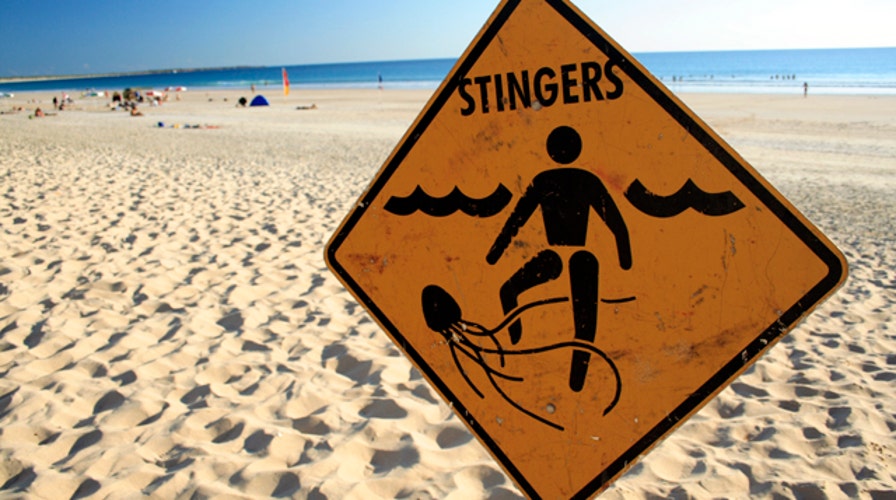How to treat jellyfish stings
Q&A with Dr. Manny: I am planning a beach vacation this summer and I am worried about jellyfish stings. What is the best course of action if I or one of my kids are stung?
Warmer weather is finally on the horizon, which means summer is on its way. But sun, grilling, and lazy vacations also bring beach hazards, like jellyfish. The risk of jellyfish stings threatens 150 million people worldwide annually, according to the National Science Foundation.
We received the following email from a viewer:
Q: I am planning a beach vacation this summer and I am worried about jellyfish stings. What is the best course of action if I or one of my kids are stung?
First, get to know what species of jellyfish are in the area you are visiting so you have an idea of what to look out for. If you are stung in the Indo-Pacific, for example, where there are species of the highly toxic box jellyfish, the best course of action is to rinse the area with vinegar and seek medical treatment immediately as a sting can be fatal.
For less extreme species, like the moon jellyfish where the toxins just cause discomfort, there is a regimen of home remedies that can offer relief.
A jellyfish’s tentacles are covered in microscopic barbs that inject venom into your skin, causing painful, irritating blisters. First, use the straight edge of an identification or credit card or flush the affected area with sea water to remove the barbs. Avoid using bottled water as that can worsen the symptoms.
Then, to deactivate the venom of most jellyfish, rinse with vinegar or a mixture of baking soda and sea water for roughly 20 minutes.
To manage the pain, soak the affected area in hot water or apply a cold compress. If you are on the move and can’t do so, using calamine lotion or a mild hydrocortisone may help. Another option for relief is an oral antihistamine.
If irritation persists or you are having an extreme allergic reaction to the sting, seek medical attention as soon as possible. Before taking any topical or oral medications, consult with your doctor.

